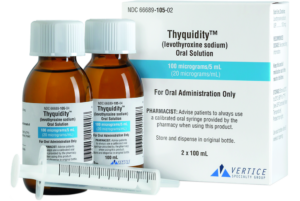Gabapentin
Gabapentin is a medication that has become increasingly popular in recent years due to its versatility in treating a range of medical conditions. This article will provide you with comprehensive information about gabapentin, its various uses, recommended dosages, and potential side effects.
What is Gabapentin?
Gabapentin is an anticonvulsant medication initially developed to control epileptic seizures. However, over time, it has found various off-label uses due to its unique mechanism of action in the brain. Gabapentin primarily affects neurotransmitters, specifically gamma-aminobutyric acid (GABA), which helps to reduce nerve-related pain and alleviate symptoms associated with certain medical conditions.

Uses of Gabapentin
1. Epilepsy and Seizures : Gabapentin was first approved by the U.S. Food and Drug Administration (FDA) in 1993 for the treatment of partial seizures and epileptic disorders. It can be used alone or in combination with other antiepileptic drugs to control seizures in individuals with epilepsy.
2. Neuropathic Pain : One of the most common off-label uses of gabapentin is for the management of neuropathic pain. Neuropathic pain arises from damage or dysfunction in the nervous system and can result from conditions such as diabetic neuropathy, postherpetic neuralgia (shingles), and fibromyalgia. Gabapentin helps reduce the perception of pain by modulating nerve signals.
3. Anxiety Disorders : Gabapentin has also been prescribed off-label for anxiety disorders, including generalized anxiety disorder and social anxiety disorder. It can have a calming effect on the nervous system, making it beneficial for those experiencing anxiety symptoms.
4. Restless Leg Syndrome (RLS): Restless Leg Syndrome is a neurological disorder characterized by uncomfortable sensations in the legs, often accompanied by an uncontrollable urge to move them. Gabapentin can help alleviate these symptoms and improve sleep in individuals with RLS.
5. Migraine Prevention: Some individuals with frequent migraines may find relief with gabapentin. It is used as a preventive measure to reduce the frequency and severity of migraine attacks.
6. Alcohol Withdrawal: Gabapentin may be prescribed to individuals undergoing alcohol withdrawal as it can help manage symptoms such as anxiety and insomnia that often accompany this process.
Dosage of Gabapentin
The proper dosage of gabapentin depends on several factors, including the medical condition being treated, your age, weight, overall health, and your healthcare provider’s recommendations. It’s essential to follow your healthcare provider’s instructions carefully and not to adjust your dosage without consulting them. Below, I’ll provide general dosage guidelines for common uses of gabapentin, but remember that these are only approximate guidelines, and your specific prescription may differ.
1. Epilepsy and Seizures:
- For adults: The initial dose is often 300 to 600 milligrams (mg) taken orally three times daily. Your healthcare provider may adjust this dosage based on your response.
- For children: Dosage is typically determined based on the child’s weight. A common starting point is 10-15 mg per kilogram of body weight per day, divided into three doses.
2. Neuropathic Pain:
- The dosage for neuropathic pain can vary significantly. It often begins with a low dose, such as 300 mg taken once daily, and may gradually increase to 300 mg taken three times daily. Your healthcare provider will monitor your response and make adjustments as necessary.
3. Anxiety Disorders:
- Gabapentin is sometimes used off-label for anxiety disorders, and the dosage can vary widely depending on the individual and the specific condition. It is generally lower than the dosages used for epilepsy or neuropathic pain.
4. Restless Leg Syndrome (RLS):
- Dosages for RLS typically start low, often at 300 mg taken in the evening, and may be adjusted upwards as needed.
5. Migraine Prevention:
- The dosage for migraine prevention can vary, but it is usually lower than that used for epilepsy. It may start with 300 mg taken once daily, with potential increases.
6. Alcohol Withdrawal:
- Dosages for alcohol withdrawal symptoms may vary, but they are often similar to those used for anxiety disorders.
Keep in mind the following important considerations when taking gabapentin:
- Titration: Gabapentin is usually started at a lower dose and increased gradually to achieve the desired therapeutic effect while minimizing side effects.
- Renal Function: If you have kidney problems, your healthcare provider may adjust your gabapentin dosage because the drug is primarily excreted through the kidneys.
- Age and Weight: Dosage may differ for children and adults, as well as for individuals of different body weights.
- Individual Response: Everyone responds differently to medications, so your healthcare provider may need to fine-tune your dosage to achieve the best results.
Never stop taking gabapentin abruptly or change your dosage without consulting your healthcare provider, as this can lead to withdrawal symptoms or exacerbation of your condition. If you experience any side effects or have concerns about your medication, don’t hesitate to discuss them with your healthcare provider. They can provide guidance and make necessary adjustments to ensure you receive safe and effective treatment.
Side Effects of Gabapentin
While gabapentin can be effective for many people, it is not without potential side effects. Common side effects include:
- Dizziness: Gabapentin can cause dizziness or lightheadedness, especially when standing up quickly. It’s important to be cautious, especially when first starting the medication.
- Drowsiness: Some people may feel drowsy or excessively tired while taking gabapentin.
- Weight Gain: Weight gain is a known side effect of gabapentin and can be problematic for some individuals.
- Nausea and Vomiting: These gastrointestinal symptoms can occur but are less common.
- Mood Changes: In some cases, gabapentin may cause mood swings, depression, or anxiety.
- Difficulty Concentrating: Some individuals may experience difficulty with concentration or memory while taking gabapentin.
Severe side effects are rare but can include allergic reactions, severe skin rashes, and changes in liver function. If you experience any unusual or severe side effects, seek medical attention promptly.
In conclusion, gabapentin is a versatile medication with a wide range of uses, from controlling seizures to managing neuropathic pain and anxiety. It is essential to work closely with your healthcare provider to determine the appropriate dosage and monitor for any potential side effects. While gabapentin can be a valuable tool in managing certain medical conditions, it should always be used under medical supervision to ensure safe and effective treatment.
Medarchive.us does not assume any responsibility for any aspect of healthcare administered with the aid of materials provided. The information contained herein is not intended to cover all possible uses, directions, precautions, warnings, drug interactions, allergic reactions, or adverse effects. The information provided on our Web or Videos does not endorse drugs, diagnose patients, or recommend therapy. If you have questions about the medication you are taking or want to start as treatment, check with your doctor or medical health care provider.







